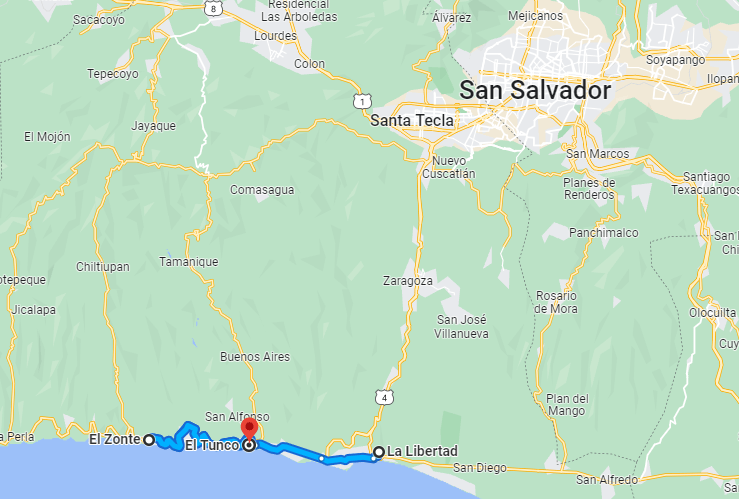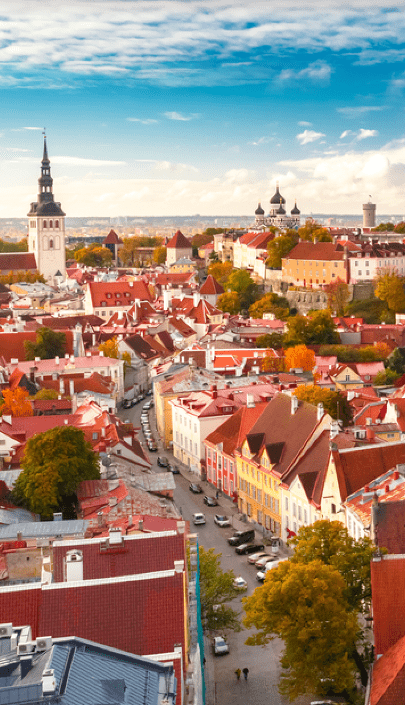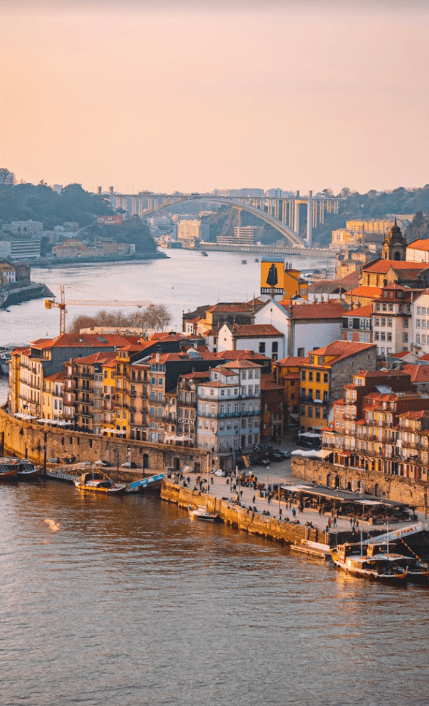Digital Nomads Are On The Rise. But Where Are They Going Now?

With travel restrictions and border closures, it’s more challenging than ever to explore the world while working remotely.
However, many countries are now offering new incentives to attract digital workers looking for a fresh start.
In this article, we’ll explore the top ten destinations for digital nomads in 2023 and beyond, offering a mix of affordability, culture, and quality of life to suit every taste and budget.
Whether you’re a young and adventurous globe-trotter, a seasoned remote worker with a more mature outlook, or a remote-working family with kids in tow, our selection of destinations will have you dreaming of your next adventure.
So get ready to pack your bags and explore the world while working remotely – these destinations are sure to spark a sense of adventure and inspire your inner nomad!
Why Be a Digital Nomad?
One of the most powerful steps you can take for your Plan B is establishing a presence in another country.
Obtaining residency in a foreign country doesn’t mean that you have to uproot and relocate.
What it does mean is that you’ll have at least one more place in the world where you’re welcome to live, work, invest, do business, and bring your family.
In short, you’ll always have another option. And that’s what having a Plan B is all about— having more options. Because more options means more freedom.
One country no longer holds total control of your travel and living options.
It’s an insurance policy so that no matter what happens in your homeland, you will always have another place to live, work, raise a family, and call home.
Living in Cities Where You Can Still Beat Inflation
Inflation is and will be one of the biggest stories in this decade.
It’s a story of abject failure — of how the ‘experts’ who have been entrusted to pull the giant levers of the economy were asleep at the wheel.
These people don’t have any real solutions. The central bankers themselves have admitted publicly that their maniacal interest rate hikes will have zero impact on bringing down food prices, gasoline prices, or fixing supply chain challenges.
Meanwhile the politicians who helped light this inflation blaze by dumping trillions of dollars into the economy want to ‘fix’ the problem by… dumping more money into the economy. It’s genius!
Certainly a lot of people are holding out hope that the government will help arrest the decay of money.
And hope is great. But it’s not a Plan B, let alone a Plan A.
There are different ways of dealing with inflation, ranging from smarter places to park your savings, moving your investment allocation to real assets, small-scale food production, and much more.
Another way, at least for people who have the ability to do so, is living in a place where your money goes much, much further than back in your home country.
And this is also one of the main objectives of this article, to outline a few picks — cities that are still bargains in terms of cost of living and have the added benefit of being major global travel hubs. This works great for digital nomads, or semi-retirees who are still on the go.
With remote workers being spoiled for choice – which cities are they looking to move to next?
1. Mexico
When Rachel became a remote worker during the pandemic, she had no trouble choosing a location. She and her partner booked a one-way flight to Mexico City. And they never looked back.
While most cities are more suited for short-term leisure travelers because of the high living cost. Mexico City is extremely affordable. It is one of the largest and most cosmopolitan cities in the world.
“This. Was. It. The culture, the language, the people, the history, the vibes… Finally we were living our dream, and it felt so right.” says Rachel, a digital nomad running the blog White Collar Wanderer.
Juarez International Airport (MEX) is the most connected airport in the world outside of the US in 2022, according to OAG, a global travel data firm.
It offers direct flights as far away as Seoul, Korea, and Tokyo, Japan. In Europe, it offers flights directly to London, Paris, Madrid, Barcelona, Amsterdam, Frankfurt, and Munich.
And of course it offers direct flights to destinations all across the United States, and into South America, including Santiago, Chile, São Paulo, Brazil, and Buenos Aires, Argentina.
Mexico City is turning popular among digital nomads and remote workers because it offers all the amenities of the world-class mega-city it is, for a fraction of the cost of Paris, Tokyo, or New York City.
Mexico has not seen the same supply chain problems as most of the rest of the world. It didn’t destroy its economy during COVID, and the Mexican peso has remained relatively strong.
Still, Mexico is a very inexpensive place to live. Even in Mexico City, one of the most expensive places in Mexico, a single person could live comfortably on about $1,900 per month (for everything — rent, food, entertainment, etc.).
And once you visit Mexico City, you realize what incredible value it offers. It is beautiful, bursting with parks, and overflowing with cultural attractions, museums, and events.

In Polanco, one of the nicest neighborhoods that is also popular with expats, there is free public WiFi throughout the entire community.
The median download internet speed in Mexico City is about 60 Mbps, according to speedtest.net. That speed can easily handle streaming and online gaming.
BUT Mexico City is huge, and this median speed doesn’t tell the whole story…
For example, Sovereign Research CEO Viktorija, who lives in Mexico City, reports download speeds of 1000 Mbps on fiber optic internet. But she pays close to $80 per month (including phone/TV too), which is considered expensive for Mexico City.
Mexico City in general has an easy-going, laid back vibe. You won’t find rabid, woke mobsters accosting you outside of restaurants here.
What are The Best Travel Comparison Site For Digital Nomads?
You have a lot of choices for travelling as a digital nomad — almost too many choices. 12go provides multi-modal travel. Here’s a short list:
- Flights
- Trains
- Buses
- Ferries
- Vans
- Taxis
- Day Trips
- Car Rental
2: El Salvador

If you love a good rags-to-riches story (like the case for Singapore) and want to witness it before its meteoric rise, El Salvador is the best place to be right now.
The country made headlines when President Nayib Bukele announced the adoption of bitcoin as legal tender. And it caught on like wildfire over the news and social media.
Ever since that announcement, El Salvador has seen record breaking visits of up to 83% in 2022 and double digit GDP growth of 10.3%.
Since then, thousands of Bitcoiners have made the pilgrimage to El Salvador. As Tone Vays, a Bitcoin analyst, said of his visit to El Salvador, “99.9% of the world had no clue where this country was; maybe 98% didn’t know this country ever existed–they’re [El Salvador] certainly on the map now.”
Max Keiser, a Bitcoin advocate chose to take up his residency in El Salvador and now base his broadcasting operations here. As part of the Bitcoin Bill, residency in El Salvador could effectively be bought for 3 BTC, or $66,000 at the time of writing, as part of an investment into the country.
President Bukele has further announced the construction of a ‘Bitcoin City’ at the base of the Conchagua Volcano in the Eastern part of the country, where cheap, geothermal energy from the volcano can provide electricity to the development.
The city would have no taxes on income, capital gains, or property; the ongoing operations would be funded solely by the 10% value-added tax (VAT).

There are also plans to develop ‘Bitcoin Beach’ – a popular surfing spot that’s located about one hour’s drive from the capital city of San Salvador. (Host for the 2021 ISA World surfing games)
Driving through Bitcoin Beach today, you can tell a major makeover is in progress. There is a ton of construction in La Libertad, all along the main highway, and in El Tunco. A lot of effort is being made to make this the ultimate surf and tourist destination.
In La Libertad, large buildings with thatched roofs and an amusement park are being constructed near the pier. Boardwalks and walking paths are being poured, along with new and improved infrastructure bringing in new restaurants and shopping areas.
To finance all this, El Salvador is issuing 10-year ‘Volcano Bonds’. Half of the proceeds of the bond issuance would go to funding construction projects; another half towards accumulating bitcoin. The bond would pay 6.5% annual interest, and in case of bitcoin’s appreciation upon maturity, 50% of the profit will be shared with the investors.

Photo @ Whitecollarwanderer.com
Nevertheless, this transition might still take some time to play out. So if you are used to amenities, you may be disappointed, as the countryside is still undeveloped.
BUT you get your first movers’ advantage, you get to plant your flag.
The vibe in El Salvador right now is full of optimism. Tourism has increased significantly in the past year, and many foreigners (mostly crypto aficionados) are moving into the country.
With thousands more applying for residency in the past year alone, this would mean a continuous boost to El Salvador’s GDP.
This tiny country in Central America might not work for just about anyone; but for the Bitcoin enthusiasts who are moving in and taking part in the country’s tremendous transformation, it can be a very compelling story to tell your future grandkids.
President Bukele and his visionary policies are vital to cater to the meteoric rise of Digital Nomads around the world. Countries with such forward-thinking policymakers understand that the type of people generally attracted by these programs are an overall benefit to the economy, and rarely contribute to social problems like crime, or end up as a burden to the state.
Furthermore, this gives credence to the idea of “Government-As-A-Service” rather than of compliance and control.
3: Col0mbia
 Thinking about an immersive living experience in colorful Colombia?
Thinking about an immersive living experience in colorful Colombia?
Being a digital nomad in Colombia is about to get a lot easier.
Bordered by Brazil, Peru, Ecuador and the Caribbean Sea, Colombia is a country of diverse experiences and contrasting landscapes. Having largely shed its Pablo Escobar associations in recent years, the country is increasingly a go-to destination for adventure travelers and digital nomads.
And combined with an exceptionally low cost of living – it scores a “2 out 7 – Very Cheap” – in the Sovereign Cost of Living Index – the country should tick a lot of boxes for remote workers.
In the past, you would have had to do cumbersome border runs or apply for residency to stay there for longer than 90 days at a time, but the newly created Colombian Digital Nomad Visa (see page 26) should now make things easier.
The Colombian Digital Nomad Visa will also be available to foreigners seeking to establish a new digital or technology focused business in Colombia. Visa holders will, however, not be allowed to seek local employment in the country.
You will also be able to bring your spouse and dependent minor children along – and the law, as it stands, does not indicate that you’d need to earn more in order to do so.
In addition, the law does not mention anything about taxation for nomads. You will, however, most likely become a tax resident in Colombia if you live there for more than 183 days per year.
Pro Tip: Do keep an eye out on Colombian popular routes and how you can benefit on cheaper tickets.
4: Thailand
 Thailand, in many ways, is truly at the center of the nomad world.
Thailand, in many ways, is truly at the center of the nomad world.
Suvarnabhumi Airport (BKK) on the outskirts of Bangkok offers direct flights to 108 destinations.
You won’t find many direct flights to the Americas. But its a great option to connect directly to Asia, Australia, and most of Europe.
And of course, it is famous for white sandy beaches.
Bangkok’s internet is excellent, with median download speeds around 218 Mbps.
While Bangkok is a bit more expensive than Mexico City, a single person could still live well on less than $2,200 per month.
And in addition to the low cost of living, Bangkok offers access to high quality inexpensive healthcare.
Thailand, for decades, has been a bucket list destination for backpackers, retirees and long-term travelers. It is renowned as one of the world’s top travel destinations. The country’s islands and beaches are world renowned, and Chiang Mai, in the interior, is a hub for remote workers.
In 2019, the country welcomed over 39 million tourists, and its capital, Bangkok, won the title of “Most Popular City Destination – 2017” in the Mastercard Global Destination Cities Index.
Plus, given the country’s low cost of living, it is an obvious option for long-term, budget conscious travelers – like digital nomads, as well as retirees.
5: Costa Rica
Costa Rica’s ascent as an excellent Plan B destination…
 Given its scenic beauty, relaxed pace of life, affordability and proximity to North America, Costa Rica has long been popular among American retirees.
Given its scenic beauty, relaxed pace of life, affordability and proximity to North America, Costa Rica has long been popular among American retirees.
But the country is also increasingly popular among a younger generation of remote workers and digital nomads.
The reason for this?
As was the case in many tourism dependent countries, the pandemic had a devastating impact on the country’s finances.
So with a view to attract more investors, remote workers and digital nomads, its lawmakers implemented a number of legislative amendments to make the country’s residency requirements more accessible.
As things stand today, there are at least three Costa Rican residency programs that should be on your radar…
And if you’re a digital nomad, you’re in luck, too…
If you’re not looking to obtain permanent residency status in CR in future, e.g. if you’re just looking to spend a year in Costa Rica without the hassle of visa runs, then the country’s Digital Nomad Visa can conveniently and affordably do the trick.
In order to qualify for this long-stay visa (it’s good for 12 months), you must be earning at least $3,000 outside of Costa Rica, and $4,000 if you’re applying as a family.
When you add a low cost of living, stunning scenery and a thriving expat community to the above beneficial residency changes, Costa Rica really does start looking like an excellent Plan B option – for North Americans, in particular.
But as tourism-dependent countries start recovering from the adverse impacts of government response to Covid, it is unlikely that residency deals this good will stay around forever.
So do check out the Popular Digital Nomad Destination here before you travel.
6: Spain
 It’s hard not to like Spain. Its famous beaches, in particular, attract scores of travelers and settlers from all over the world on an annual basis.
It’s hard not to like Spain. Its famous beaches, in particular, attract scores of travelers and settlers from all over the world on an annual basis.
Spain is a place of raw energy and diverse landscapes. Ranging from the Pyrenees Mountains in the North and lush vegetation in the Northwest to deserts in the south and plains in the west, the country is truly a dream destination for explorers.
Then, of course, there are the Spanish cities. Madrid is magnificent, and was once the capital of a vast Spanish Empire. Many of South America’s most precious cultural artifacts and treasures are still housed in the city’s museums.
Barcelona, too, is a city that combines everything you may desire – from great weather and amazing restaurants to a fabulous lifestyle and Gaudi’s architecture.
Combine this with a very reasonable cost of living, and you have a recipe for an amazing place to live and roam around.
And luckily for digital nomads, at the end of 2022, Spain introduced their version of a digital nomad visa as part of their new “Startup Law.”
7: Ecuador

Photo by Gleb Albovsky on Unsplash
Boasting stellar beaches, tropical jungles, and cooler mountain towns, Ecuador is a place of natural wonders waiting to be explored.
Bordered by Colombia, Peru, and the Pacific Ocean, Ecuador can be easily reached via direct flights from major cities such as Miami, New York, and Houston.
Whether you’re looking to soak up the sun on some of the world’s most stunning beaches, trek through lush jungles teeming with wildlife, or immerse yourself in the culture and history of its charming towns and cities, Ecuador has something for everyone.
Home to five UNESCO World Heritage Sites, around 2,500 animal species, and the famous Galapagos Islands, the country’s tourism sector was decimated by Covid.
Hence, it comes as no surprise that the country is now following in the footsteps of other South American countries by launching their own Digital Nomad Visa (DNV) to lure high-spending remote workers to their shores.
Cuenca, Quito and Loja all have growing American expat communities – and it’s especially popular among expat retirees. The cost of living in these places is really affordable – the country scores a “2/7 – Very Cheap”.
It has therefore also become an attractive – and underrated – destination for digital nomads.
The capital of Quito, today, is home to over 100 co-working spaces catering to remote workers’ needs, while short term accommodation here tends to be a lot more affordable than in many other “nomad hotspot” cities.
(Note: While Ecuadorian fixed-line internet speeds aren’t great – running at an average of 47.36 Mbps – it should be more than sufficient for the average remote worker.)
While many other more prominent digital nomad destinations are getting pricier and more stringent – or even disappearing – Ecuador’s DNV should be on your radar if you’re looking for a Latin American adventure while working remotely.
8: Estonia

The Pioneer for Digital Nomad Visas
Estonia is the first country to pioneer a digital nomad visa. Having only gained independence in 1991, it has positioned itself as a digital society where 99% of government services can be accessed online.
Estonian digital nomad Karoli Hindricks, founder of Jobbatical, a job-finding service for remote workers; believes that where you were born is simply a statistical error; a remnant of the old industrial world. Where we are going on the other hand is a new world without flags.
If you’re looking to spend up to a year living and working remotely from Europe,
as a remote worker or online business owner, Estonia’s Digital Nomad Visa (DNV) program can definitely help you achieve just that.
This could be your gateway to Europe.
While most European countries pose tiresome challenges for remote workers around the world, the Estonian Digital Nomad Visa aims to pave a simple way for nomads to be able to travel through the Schengen Region visa-free.
Estonia’s cost of living is relatively cheap by Europe standards, but it’s obviously higher compared to that of scores of other countries in this list. So if geo-arbitrage is your objective – i.e. earning hard currency and living somewhere far cheaper – there are certainly better destinations to consider.
What are the benefits of choosing Estonia as your digital nomad destination?
Tech Hub: Estonia is home to more than 5.5X more startups, per capita, than the average European country. So if you’ll be building your own startup while staying in Estonia, you should also be able to network and forge valuable relationships with players in the country’s startup scene.
EU VISA-Free Travel: While you’ll be required to prove that you have a fixed address in Estonia in order to qualify for the program, you can use the country as a base from which to explore the other 26 EU countries.
(You are legally allowed to visit other EU countries for 90 out of each 180 days, however the borderless nature of the EU means that this limit is difficult to enforce.)
Official Applications can be done Online: While you will be required to schedule an appointment with your local Estonian consulate to have your visa issued, the application process can be started online.
The Bottomline
While not everyone will be keen on spending long periods of time in a chilly Northern European country, Estonia can serve as a great base from which to explore the rest of Europe.
And while the program’s minimum income requirements are high, being based in Tallinn, the country’s capital, can provide an amazing cultural immersion experience and highly valuable networking opportunities.
And if you do end up pursuing this program, be sure to share your experiences with us.
9: Namibia

Looking for a change of scenery and epic outdoor adventures in Africa?
If wildlife safaris, dune-boarding and hot air balloon rides over the desert sound like your thing, then Namibia might be just the place for an extended remote working stint.
Bordered by South Africa, Botswana, Angola, and the Atlantic, Namibia has a population of just over 2.5 million people. The country is home to dramatic landscapes, friendly locals, and vast open spaces – not to mention natural attractions like Dune 6 at Sossusvlei.
The country is both appealing as a travel destination and very affordable for young digital nomads.
What’s more; the Namibian Digital Nomad Visa program makes it an interesting option if you can work remotely.
The program, introduced by the Namibia Investment Promotion and Development Board in mid-October, offers remote workers the ability to live in the country for up to six months.
Mobile internet speeds in the country, while not fast, are adequate (22.2 Mbps/s). And while you may wish to base yourself in or near Windhoek, the country’s capital, a trip to the quaint coastal town of Swakopmund is highly recommended.
As with most other Digital Nomad Visa programs, you won’t be allowed to get a local job in Namibia.
And another downside of the Namibian program – you are NOT able to apply on the basis of savings only.
The income requirements, however, are reasonably low, starting at just $2,000 per month for solo applicants.
And while there has been no formal communication from the Namibian authorities in terms of how Digital Nomads will be treated tax-wise, you should expect to fall into the Namibian tax net if you spend more than 183 days per year there.
On the bright side, Namibia is home to a territorial taxation system. Only income sourced from within the country is generally taxed by Namibia.
10: Portugal

Portugal needs no introduction as a safe, relaxed and scenic Plan B destination.
Boasting a temperate climate and a low cost of living, the country is also increasingly becoming a “Plan A” destination for remote workers and digital nomads.
According to various media reports, the government’s intention is to enable practically anyone who wishes to move to Portugal for work and settlement to do so with ease.
According to a recent EuroActiv news report, Portugal’s Deputy Minister for Parliamentary Affairs, Ana Catarina Mendes, is on record as saying that:
“…in the promotion of safe, orderly and regulated migration and the fight against labour shortages, a new type of visa has been created, specifically the visa for the search of work, thus enabling entry into Portugal for nationals of foreign states who come to look for work for 120 days, extendable for a further 60 days, for a total of 180 days.”
That’s four months, plus an extension of two months, for a total of six months to find your dream job in the land of grilled sardines, pastéis de nata and vinho verde.
Portugal is not the world’s top destination for sky-high salaries. But to make up for it, the cost of living there is pretty cheap – especially for Europe.
If you’ve had it with things in your home country, and a relaxed lifestyle, personal safety and sun-drenched beaches sound like your bag, then living and working in Portugal might be just the thing for you.
Conclusion on Best Digital Nomad Destinations
Digital nomads are boldly exploring new worlds for work and adventure!
Fortunately for us, the world is becoming a far more accessible place. As competition in the Digital Nomad Visa (DNV) space increases, we can expect to see more unique places with even lower income requirements, faster approvals, and easier application processes.
And, in places like El Salvador, if you wanted to, you could stay indefinitely on a shoe-string budget. All you need is the right information, the right support, and the will to take action.
If you’re contemplating to move overseas, first learn how to make money online and then after you’ve built yourself a sustainable income stream, glean over the list again and make one destination your target.
The best destinations for digital nomads offers you a chance to rediscover and fulfil your life-long dream.
Mexico City could become your base of operation to travel the world.
These are some of the best connected global travel hubs with a low cost of living. But that doesn’t mean they are your only options to stay connected.
Are you willing to endure chilly Estonia, for example, in order to have the benefits of travelling through Europe?
That is for you to decide.
So what do you need to learn as a digital nomad?
I’ve handpicked a few guides for you to read next:
- 7 Best Ways to Earn Passive Income with Cryptocurrency
- 10+ Best Work From Home Jobs That Take Little or No Experience
- 12 Best Travel Hacks to Save You Time, Space and Money
- 10+ Legit Ways to Earn Free Bitcoin (#3 is My Favorite)
I live and breathe making an income online. I’ll be sharing more ideas and guides soon. Stay tuned. If you haven’t already, Sign up here to receive my emails.







